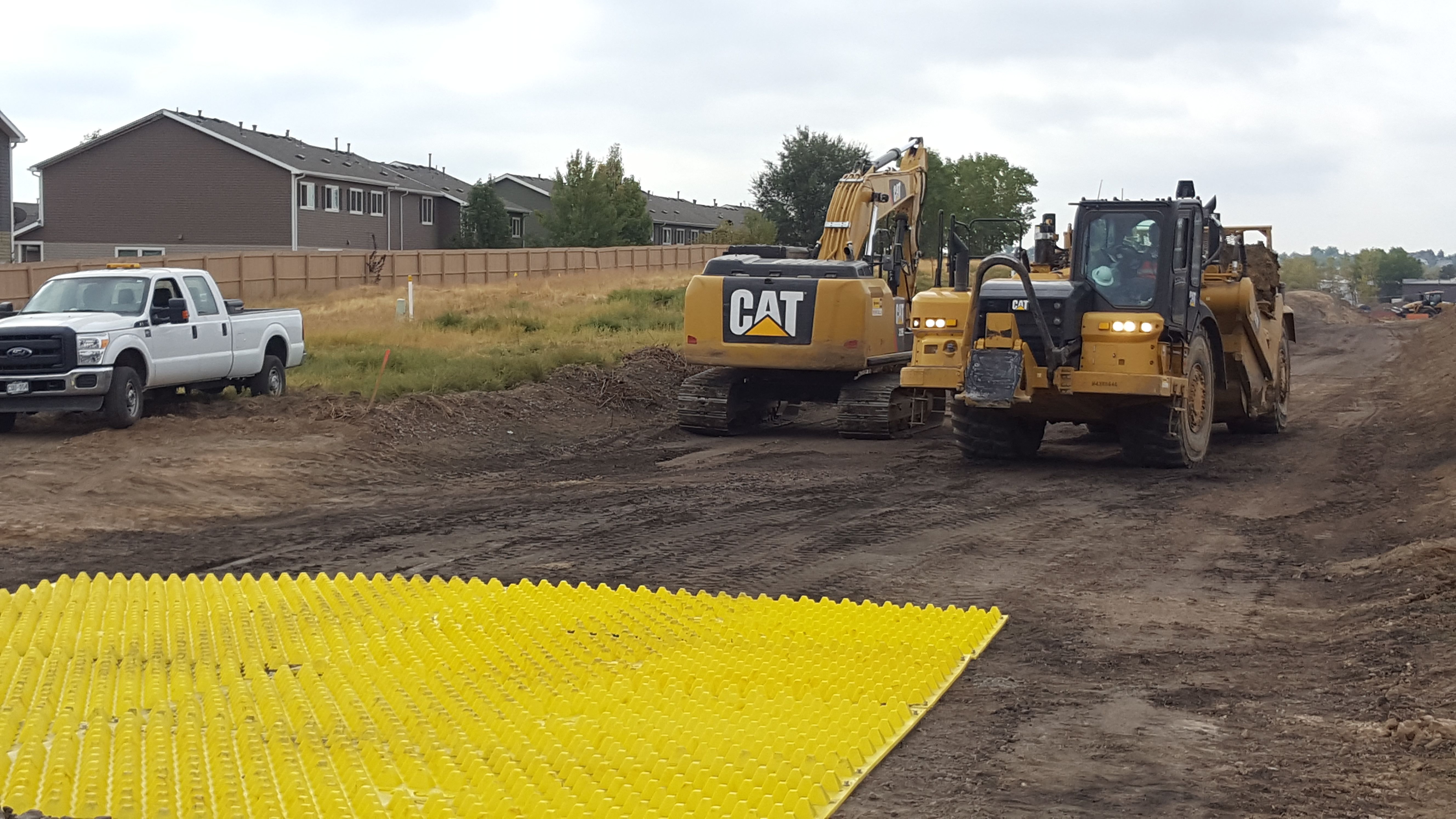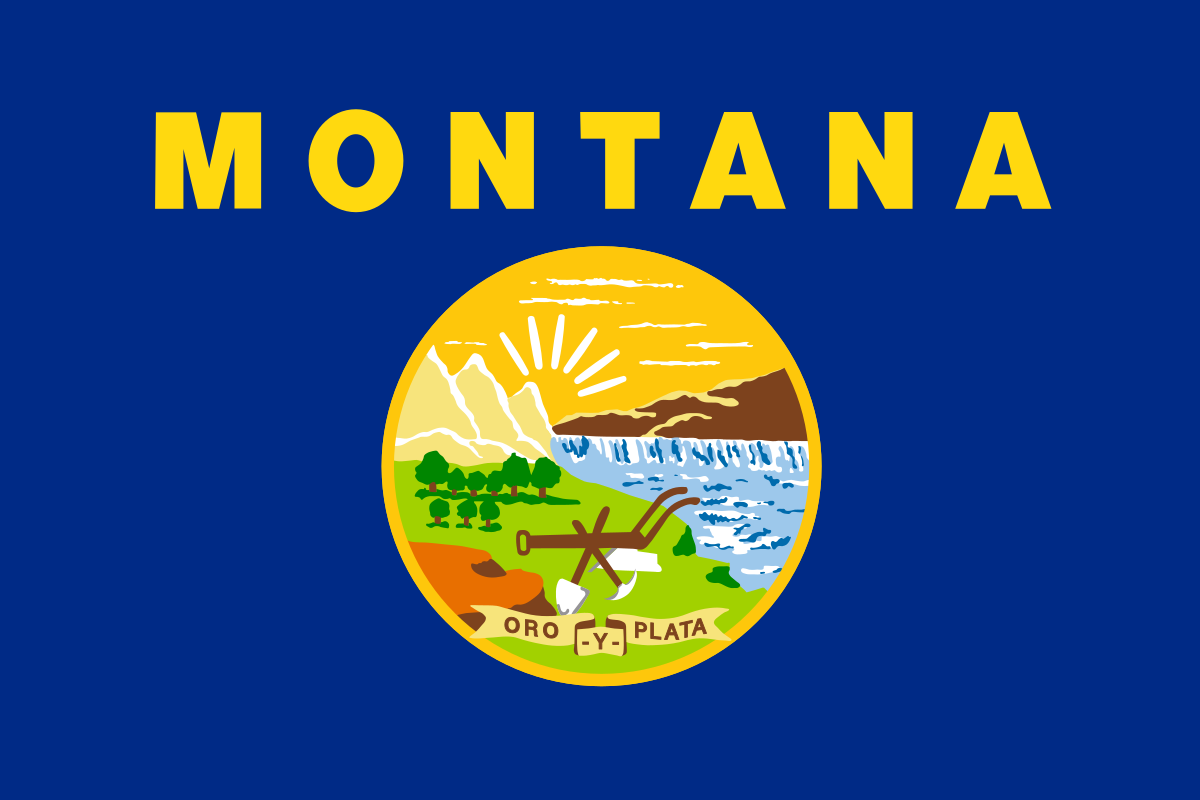Montana Stabilized Construction Entrance/Exit BMP
Stormwater runoff from Montana contributes to three major drainage systems in the continental United States. The West Divide system joins the Columbia River and reaches the Pacific Ocean. The Northern Divide feeds the Hudson Bay, and the Missouri River begins in Montana running the Eastern Divide to the Gulf of Mexico. The diverse watershed system of Montana effectively contributes to the health and sustainability of the agriculture and ecosystem within and below its borders.
Montana boasts an approximate 3,000 lakes including the largest natural freshwater lake in the Western United States: Flathead Lake. The state is filled with thousands of named streams and rivers and many more that have not been named. The recreation and tourism industry of Montana is highly dependent on the health and quality of the watershed system of the state. In 2017 nonresident guided trout fishing brought in 1.3 billion dollars in revenue to the state. Additionally, the power of numerous rivers is harnessed to provide jobs and electricity for many Montana residents. The water is utilized further for irrigating crops, mining, and individual consumption.
Montana’s vast and natural landscape is a beautiful sanctuary for humans and animals alike. The state is home to a large ecological system including several endangered and threatened species such as the Black-Footed Ferret, Whooping Crane, and the White Sturgeon. All life is reliant on the purity of the water available to it, therefore it is of vital concern for residents, industries, and governments to work together and act in implementing plans, rules, and guides for protecting Montana’s stormwater system.
Montana DEP NPDES Permits
The federal government began the Federal Water Pollution Control Act in 1942 which was amended in 1972 and became the Clean Water Act (CWA). These initiatives sparked laws and programs for industries and construction projects to mitigate pollutants introduced into the watershed system. Most notably of these programs is the National Pollutant Discharge Elimination System (NPDES) Permit Program created by the EPA. This permit requires industrial, municipal, and construction operators to create plans that will reduce or eliminate the impact of activities on the nation’s surface waters.
The Montana Department of Environmental Quality (DEQ) administers the NPDES program through the Montana Pollutant Discharge Elimination System (MPDES). The administration of the program includes reviewing and issuing permits to operators and enforcing compliance with permit requirements. In addition, the DEQ provides resources to assist engineers and contractors as they plan projects.
All construction activities which disturb an area of one acre or more require coverage under an MPDES stormwater permit. Many construction projects can obtain coverage under the Storm Water Construction General Permit (MTR100000) by submitting a Notice of Intent (NOI) and a Stormwater Pollution Prevention Plan (SWPPP). A Stormwater Pollution Prevention Plan (SWPPP) is a document that will highlight the potential pollution sources on the job site as well as identify the techniques and practices the operator will implement to mitigate the spread of sediment and pollutants from the construction site. These techniques are called Best Management Practices or BMPs, and can include both structural and procedural solutions. Notable BMPs include sediment traps, diversion ditches, silt fences, and stabilized vehicle entrances.
Stabilized Vehicle Construction Entrance/Exit (SCE) BMP Details
The Construction Entrance/Exit BMP is usually one of the first practices implemented at a construction site in order to minimize sediment tracking onto public roadways. Sediment that is deposited on roadways is difficult to contain and will be easily washed into storm drains from runoff. Construction Entrances are designed to remove sediment from construction vehicle tires before they leave the job site and to prevent run off from escaping onto the paved roadways. These stabilized entrances should be installed at every ingress/egress point where construction vehicles exit onto public roadways.
Various types of construction entrances are commonly used, and in some cases multiple BMPs are used to address job site trackout. In addition to the structural Construction Entrance BMP, procedural BMPs including limiting vehicle traffic to the site, and regular street sweeping are used to reduce and minimize sedimentation.
Vehicle Track Pads BMP
A traditional method for creating a vehicle tracking control pad is to create a gravel aggregate track out pad at each entrance. The track out pad should use a rough crushed rock which creates a rough surface to dislodge mud and sediment. The aggregate is installed over a filter fabric to separate from the native soil from the tracking pad. The Montana Department of Transportation (MDOT) gives guidance on control factors of a construction entrance in the MDOT Erosion and Sediment Control Best Management Practices Manual. A brief summary of the parameters includes a minimum length of 50’ minimum width of 12’ and minimum thickness of 12”.
The gravel and entrance should be sized to support the largest vehicles that will be using the exit. This includes using larger crushed rock to prevent small rocks from becoming lodged in dual tire vehicles which can cause hazards to workers and other vehicles.
Regular inspections and maintenance on the rock stabilized construction entrance should be conducted to prevent the performance of the tracking pad from falling below the standard set by Montana. As vehicles drive over the rock, the pad may become compacted and loose the surface roughness which greatly reduces performance. In addition, the rock will become saturated with soil and no longer capture additional sediment from vehicle tires. Maintenance of the gravel system may require redressing the additional rock to keep the aggregate construction exit performing properly. Any sediment that escapes the vehicle tracking pad and enters the public roadway must be immediately swept.
There are several options for designing a Vehicle Tracking Control Pad and several supplemental devices to improve the functionality of the construction entrance.
Wheel Wash BMP
When an aggregate tracking pad is not sufficient to contain sediment on the job site, a wheel wash station can be installed to more thoroughly clean vehicle tires. A wheel was station uses pressurized water to spray dirt and debris from between tire treads. The wheel wash area is a grate, cattle guard, rumble pad, or other raised area which can allow water to drain away from the vehicle. All water is assumed to be heavily contaminated with soil and contaminates and should be diverted into a sediment basin to prevent run off from entering the roadway.
Wheel wash stations can be either automated or manually operated and can be installed permanently or use a portable system. All wheel wash stations will require a source of water and a source of power.
Wheel wash areas may require maintenance to remove sediment that builds in the wash station grate or the sediment basin.
FODS Trackout Control System BMP
The FODS Stabilized Construction Entrance System is a modular, reusable BMP designed to minimize construction site track out. The system is comprised of durable 12’ wide by 7’ long matting which is sudden with pyramids. The pyramids create a permanent rough surface and work to remove sediment from a vehicle by deforming the tires so sediment and soil can freely drop from the treads.
Compared to traditional techniques, FODS offers a number of benefits to site operators. The FODS system does not degrade or become compacted over time and is up to 59% more effective than aggregate based systems. FODS can be installed over any substrate and does not require any power or water source to operate. Because the system does not use rock, the risk of rocks entering the roadways or being expelled from dual tire vehicles.
Because the system is more effective than rock, the mats are well suited for compact work environments. A 1x5T mat configuration (35’ long) is commonly used to replace 70’ rock entrance while providing a wide turning radius for exiting traffic. The mats provide a significant savings to contractors as they can be reused for 10+ years, eliminating the cost of construction entrance materials. FODS can be installed in as little as 30 minutes and can be anchored to dirt or on concrete and asphalt in urban settings.
The system is easily deployed in as little as 30 minutes which allows contractors to relocate and reuse the system as needed on each project. The mats are designed to be reused on multiple projects throughout their 10+ year lifespan.
Additional Resources
Montana DEQ Permitting and Operator Assistance

